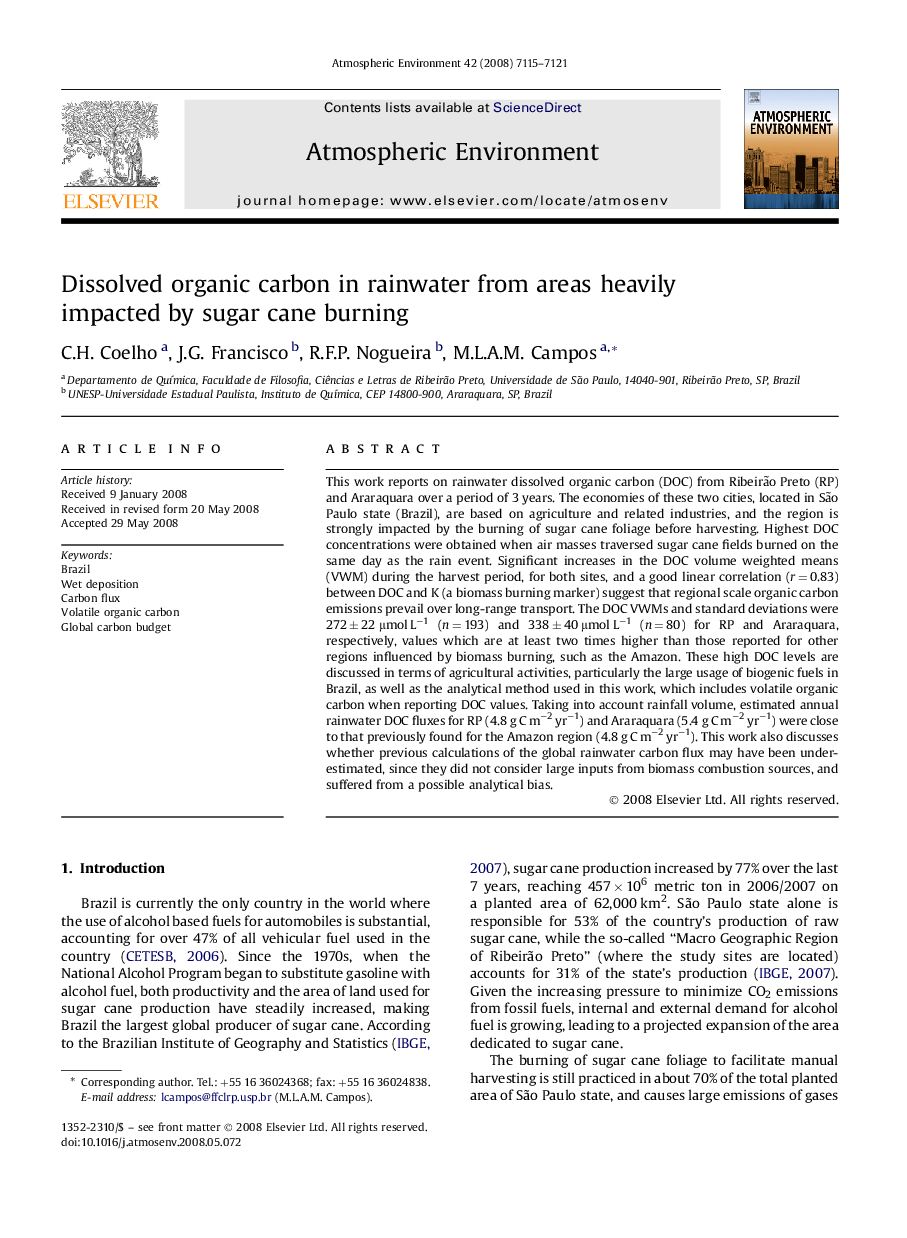| Article ID | Journal | Published Year | Pages | File Type |
|---|---|---|---|---|
| 4441665 | Atmospheric Environment | 2008 | 7 Pages |
This work reports on rainwater dissolved organic carbon (DOC) from Ribeirão Preto (RP) and Araraquara over a period of 3 years. The economies of these two cities, located in São Paulo state (Brazil), are based on agriculture and related industries, and the region is strongly impacted by the burning of sugar cane foliage before harvesting. Highest DOC concentrations were obtained when air masses traversed sugar cane fields burned on the same day as the rain event. Significant increases in the DOC volume weighted means (VWM) during the harvest period, for both sites, and a good linear correlation (r = 0.83) between DOC and K (a biomass burning marker) suggest that regional scale organic carbon emissions prevail over long-range transport. The DOC VWMs and standard deviations were 272 ± 22 μmol L−1 (n = 193) and 338 ± 40 μmol L−1 (n = 80) for RP and Araraquara, respectively, values which are at least two times higher than those reported for other regions influenced by biomass burning, such as the Amazon. These high DOC levels are discussed in terms of agricultural activities, particularly the large usage of biogenic fuels in Brazil, as well as the analytical method used in this work, which includes volatile organic carbon when reporting DOC values. Taking into account rainfall volume, estimated annual rainwater DOC fluxes for RP (4.8 g C m−2 yr−1) and Araraquara (5.4 g C m−2 yr−1) were close to that previously found for the Amazon region (4.8 g C m−2 yr−1). This work also discusses whether previous calculations of the global rainwater carbon flux may have been underestimated, since they did not consider large inputs from biomass combustion sources, and suffered from a possible analytical bias.
